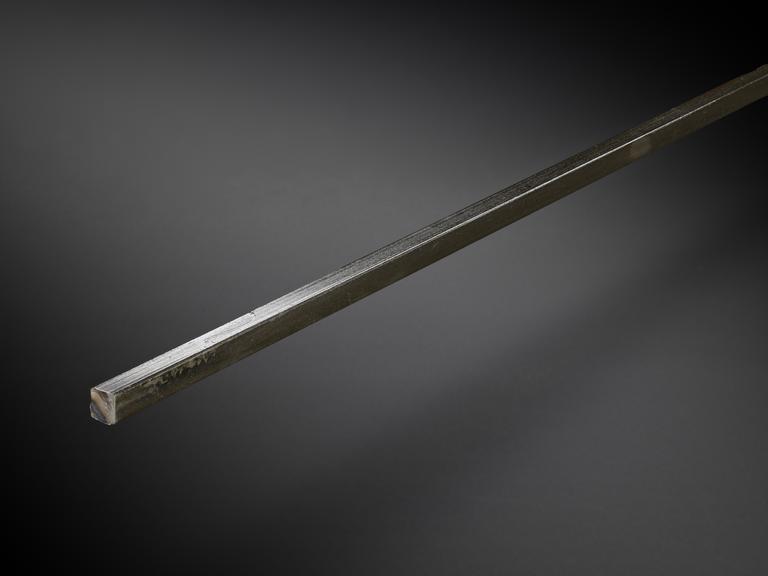Blank made of 47EN carbon steel
Blank made of 47EN carbon steel, cut to length. This is the first stage in the production of a fencing foil made by Leon Paul.
More
This object represents a stage in the manufacturing process of a standard, entry-level fencing foil, from an unworked length of carbon steel to the finished weapon. This particular example was made by fencing equipment manufacturer Leon Paul, but the process is widely used.
Leon Paul Equipment is a British company specialising in the design, production and sale of fencing equipment. The company was founded in 1921 by master fencer Leon Paul and is based in London, where they manufacture almost all of their products. Leon Paul support Olympic fencing, sponsoring over 200 athletes internationally, and four international fencing federations. They also supply equipment to the Olympic Games, and in 1996 invented the sectional aluminium piste that is now used as standard at all major fencing events.
- Measurements:
-
overall: 845 mm x 6 mm .2 g
- Materials:
- carbon steel
- Object Number:
- 2020-392/1
- type:
- blank stage
- Image ©
- The Board of Trustees of the Science Museum


















